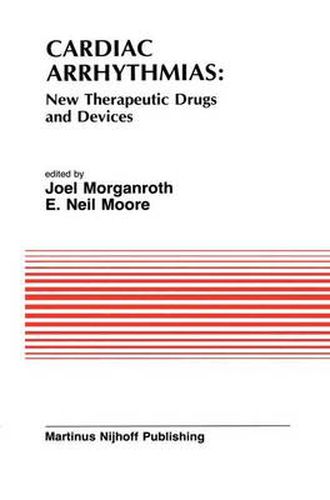Readings Newsletter
Become a Readings Member to make your shopping experience even easier.
Sign in or sign up for free!
You’re not far away from qualifying for FREE standard shipping within Australia
You’ve qualified for FREE standard shipping within Australia
The cart is loading…






This title is printed to order. This book may have been self-published. If so, we cannot guarantee the quality of the content. In the main most books will have gone through the editing process however some may not. We therefore suggest that you be aware of this before ordering this book. If in doubt check either the author or publisher’s details as we are unable to accept any returns unless they are faulty. Please contact us if you have any questions.
In summary, there are many animal models that are useful in selecting new antiarrhythmic drugs. The selection of which model is most idea depends upon precisely what question is being asked. The large number of experimental models used to evaluate antiarrhythmic compounds points out the inability of anyone model to define the probability of antiarrhythmic efficacy in man. It has therefore become standard practice to utilize a batter of animal models for the evaluation of new antiarrhythmic agents. Each model has its own advantages and disadvantages and it is necessary to understand each model fully in oder to evaluate experimental findings and apply them to clinical settings. We believe that the availability of the chronic myocardial infarction ventricular tachyarrhythmia model provides 1) an excellent opportunity to more precisely understand arrhythmia mechanisms, 2) to develop new techniques such as signal averaging for evaluating late low level potentials identifying hearts at high risk of sudden death 3) to identify new antifibrillatory drugs versus drugs that are effective primarily against PVC’s and ventricular tachycardia 4) to identify new surgical techniques to eliminate VT/VF, and 5) to evaluate new pacing modalities including implantable cardioverters. Although all animal models are wrong, many are very useful in furthering our knowledge directed at decreasing the distressingly high mortality from heart disease. NORMAL HtART TACHYCMDIA HtART , .. ‘ \ I I I I I I I I I .
$9.00 standard shipping within Australia
FREE standard shipping within Australia for orders over $100.00
Express & International shipping calculated at checkout
This title is printed to order. This book may have been self-published. If so, we cannot guarantee the quality of the content. In the main most books will have gone through the editing process however some may not. We therefore suggest that you be aware of this before ordering this book. If in doubt check either the author or publisher’s details as we are unable to accept any returns unless they are faulty. Please contact us if you have any questions.
In summary, there are many animal models that are useful in selecting new antiarrhythmic drugs. The selection of which model is most idea depends upon precisely what question is being asked. The large number of experimental models used to evaluate antiarrhythmic compounds points out the inability of anyone model to define the probability of antiarrhythmic efficacy in man. It has therefore become standard practice to utilize a batter of animal models for the evaluation of new antiarrhythmic agents. Each model has its own advantages and disadvantages and it is necessary to understand each model fully in oder to evaluate experimental findings and apply them to clinical settings. We believe that the availability of the chronic myocardial infarction ventricular tachyarrhythmia model provides 1) an excellent opportunity to more precisely understand arrhythmia mechanisms, 2) to develop new techniques such as signal averaging for evaluating late low level potentials identifying hearts at high risk of sudden death 3) to identify new antifibrillatory drugs versus drugs that are effective primarily against PVC’s and ventricular tachycardia 4) to identify new surgical techniques to eliminate VT/VF, and 5) to evaluate new pacing modalities including implantable cardioverters. Although all animal models are wrong, many are very useful in furthering our knowledge directed at decreasing the distressingly high mortality from heart disease. NORMAL HtART TACHYCMDIA HtART , .. ‘ \ I I I I I I I I I .